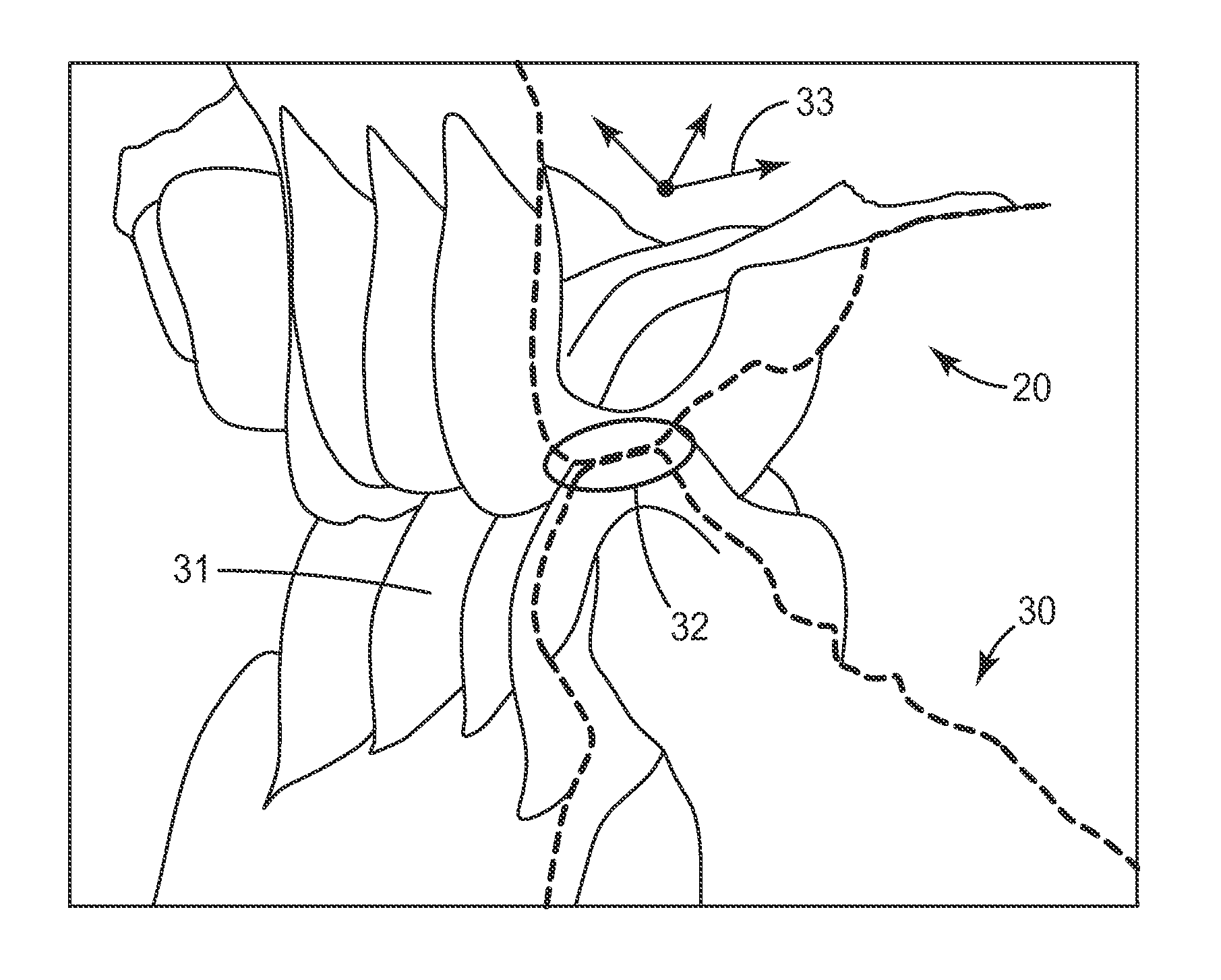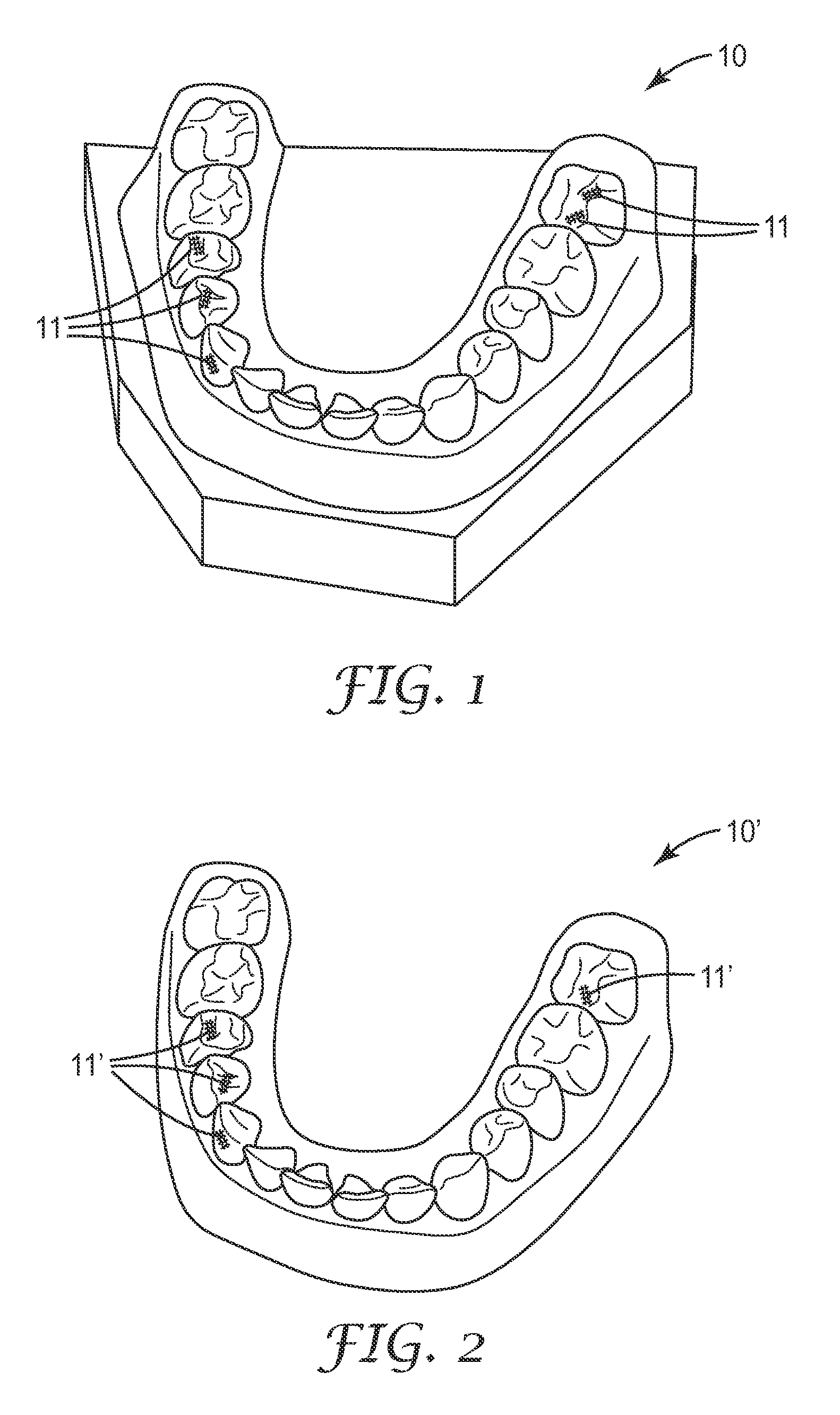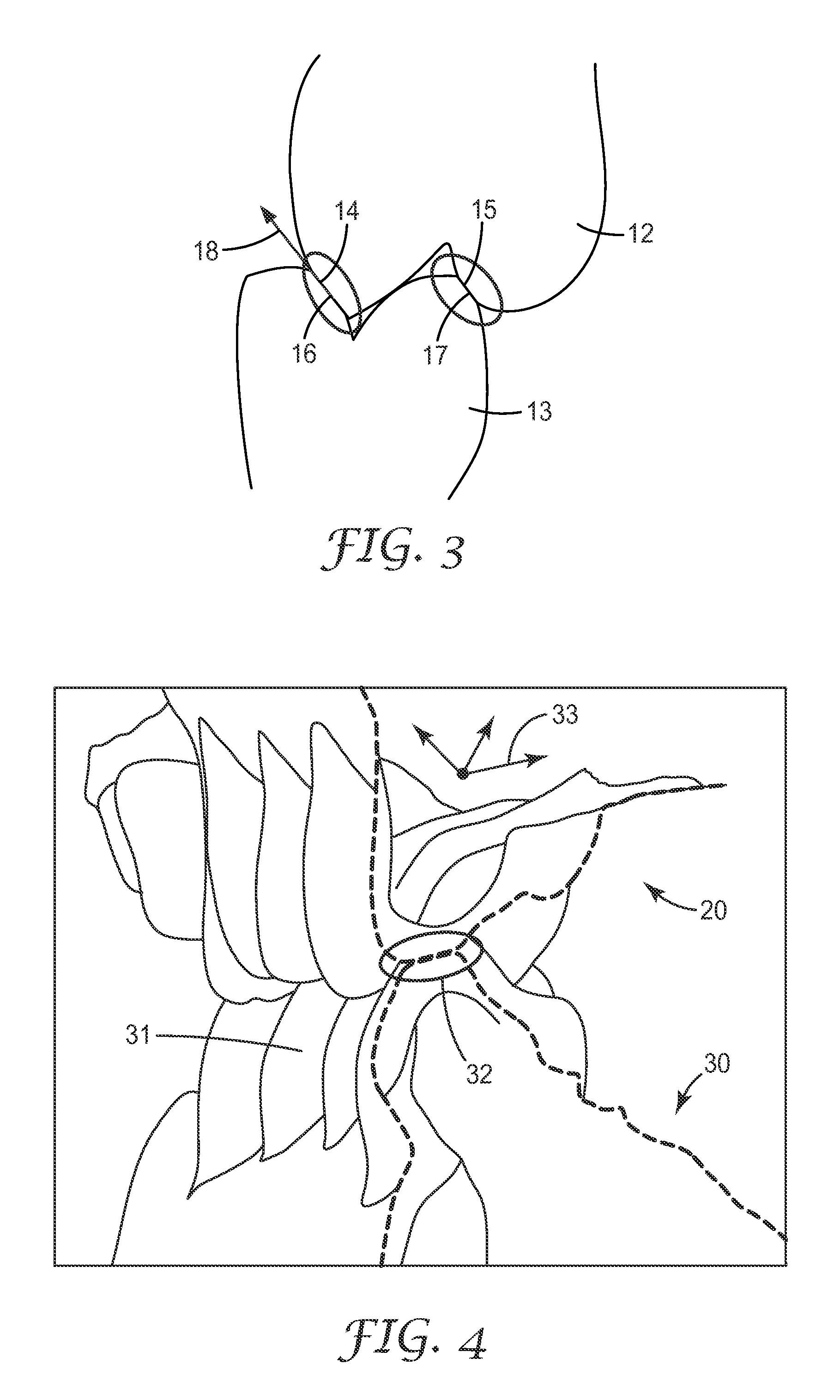Method in the making of a dental restoration
a technology for dental restorations and articulators, applied in the field of dental restorations, can solve the problems of complex use, high cost, and inability to meet the needs of patients, and achieve the effect of minimizing computer processing time and maximizing accuracy of articulation determination
- Summary
- Abstract
- Description
- Claims
- Application Information
AI Technical Summary
Benefits of technology
Problems solved by technology
Method used
Image
Examples
Embodiment Construction
[0046]The Figures describe an exemplary workflow of the method according to the invention.
[0047]FIG. 1 shows a plaster model 10 representing a patient's teeth. Such a plaster model can be typically obtained by taking a dental impression from the patient's teeth, and using the impression to form the plaster model. The dental impression is typically formed by placing a hardenable, initially liquid or pasty, impression material in a patient's mouth, allowing the material to harden in place, and finally removing the hardened, preferably elastic, material from the patient's mouth. Thus a negative impression of the patient's teeth may be formed that may then be used as a mold for the plaster. A plaster preparation may for example be filled in the negative impression and allowed to harden therein so that finally a plaster model may be obtained like the one shown in the Figure. The person skilled in the art will recognize that instead of or in addition to the plaster model the negative impr...
PUM
 Login to View More
Login to View More Abstract
Description
Claims
Application Information
 Login to View More
Login to View More - R&D
- Intellectual Property
- Life Sciences
- Materials
- Tech Scout
- Unparalleled Data Quality
- Higher Quality Content
- 60% Fewer Hallucinations
Browse by: Latest US Patents, China's latest patents, Technical Efficacy Thesaurus, Application Domain, Technology Topic, Popular Technical Reports.
© 2025 PatSnap. All rights reserved.Legal|Privacy policy|Modern Slavery Act Transparency Statement|Sitemap|About US| Contact US: help@patsnap.com



